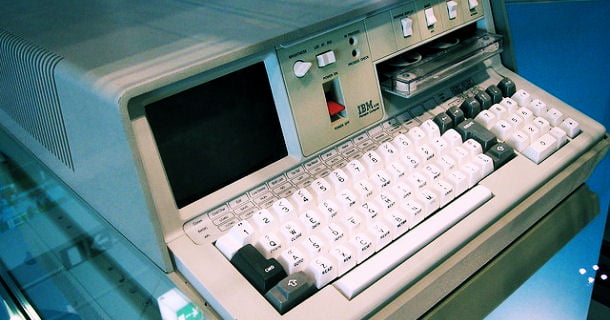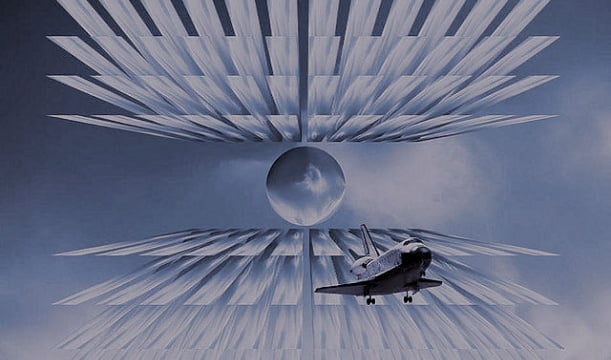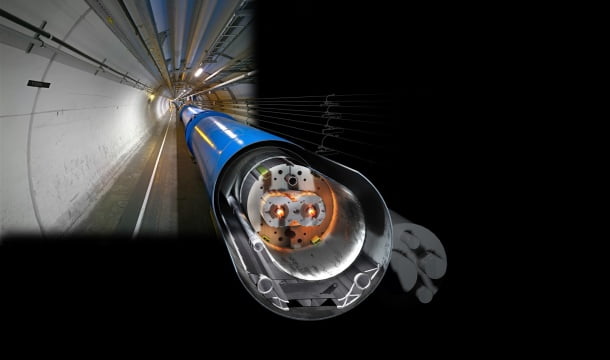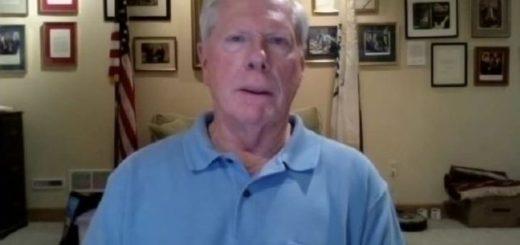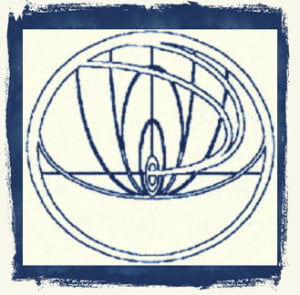 John Titor’s story was painted in the dulcet, midnight colors of Coast to Coast AM, driven by a community’s desire to believe, if just for a moment, that time travel was possible.
John Titor’s story was painted in the dulcet, midnight colors of Coast to Coast AM, driven by a community’s desire to believe, if just for a moment, that time travel was possible.
Over the years, the mythology became mired, polluted by impostors and opportunists. The story of the story took center stage, outshining what we originally found so compelling.
But how has John Titor himself, as we knew him then, fared?
Let’s find out. Let’s look at his most well known predictions, the ones that make your hair stand on end, or cause you to laugh at their outrageousness. In no particular order.
But remember: We shouldn’t call them “predictions.” They’re statements of “fact” from the point of view of a time traveler.
Reflections of an individual’s past that were never guaranteed to become our future.
1. A Devastating Nuclear War
A World War in 2015 killed nearly 3 billion people.
We’ll begin with one of the few Titor predictions we’ve yet to reach, simply by virtue of it still being in the future.
John Titor allegedly began his journey in 2036. He’d grown up in Florida, and experienced both a domestic conflict and a worldwide nuclear war. Their effects were disastrous, and much of Titor’s story involves his contempt for the people of our time period; he viewed us as sheep who did nothing to prevent the horrors that followed.
2015 is three years away, and steadily approaching. Is there a scenario brewing that may lead us down this dark path?
In the context of Titor’s predictions, perhaps not — his other, far-reaching statements, such as those about a coming Civil War in the United States, never happened (“There is a Civil War in the United States that starts in 2005”). But modern tensions today that did not exist in 2000-2001 do give pause.
These tensions involve the growing conflict with Iran about their nuclear weapons program, and threats that Israel may launch their own unilateral attack on the country very soon (Read: Israelis seem resigned to a strike on Iran)
The Middle East, already near the breaking point, has experienced violent protests in Syria and Egypt, and an indefinite occupation of the region by the United States. The situation is already bad, but it’s not difficult to imagine it becoming worse. Far worse.
2. Deception Leading To The Iraq War
None of the things I have said will be a surprise. They were set in motion ten, twenty, even thirty years ago. Are you really surprised to find out that Iraq has nukes now or is that just BS to whip everyone up into accepting the next war?
This is one of a few John Titor quotes that always jumps out at people.
It’s true that the Middle East has, in recent history (and naturally before Titor’s posts), experienced anything but peace. But the specificity of Titor’s remarks regarding not only the Iraq War, but the deception about Weapons Of Mass Destruction hits the nail on the head a little too hard to be ignored.
Titor also made statements like “As far as war goes, I have faith you are quite capable of starting one all by yourself,” and “In the grand scheme of things, the war in the Middle East is a part of what’s to come, not the cause.” Always implying that a long, drawn out battle was on the horizon.
Was this nothing more than simple foresight driven by (then-) contemporary views on foreign policy? I suppose thoughts of a renewed conflict in the Middle East were not farfetched, as the war in Iraq has a history that stretches well beyond the events of 9/11.
However, of all the alleged time travelers who have come and gone, these remarks make John Titor one of a kind.
3. The 2008 Olympics: Cancelled
As a result of the many conflicts, no, there were no official Olympics after 2004.
Of course, Titor didn’t always hit the mark.
The 2008 Olympics, which were ultimately held in Beijing, China, still happened. However, do you remember how close they came to not happening?
During the lead up to the Olympics, Tibetan protests spread throughout Chinese provinces, with calls for independence and the return of the Dalai Lama. Many wondered if this would interfere with the Olympics, leading to a boycott (Read: Police tighten grip; China says Olympics won’t be disrupted)
This is, of course, slightly twisting Titor’s words. He mentioned “many conflicts,” most likely implying that civil unrest leading up to the war rendered the Olympics impractical and unwanted.
But remember: Titor mentioned a slight divergence, anywhere from 1-2.5%, which could make all the difference in the world.
4. The Hidden Functions of the IBM 5100
You mean other than the mad cow pandemic, the breakthroughs in high-energy physics and the unknown functions of the 5100?
We’ve already talked about Titor’s connections to the IBM 5100. It’s true that, at the time of his posting, the hidden functionality of the IBM 5100 portable computer was unknown to the average consumer. Especially around 2000-2001, the average person wouldn’t have known such an obscure detail.
On the other hand, Titor’s statements about a “mad cow pandemic” and “breakthroughs in high-energy physics” are somewhat murkier.
There was mild panic regarding Creutzfeldt-Jakob Disease, or CJD (the human form of mad cow disease). However, this was quite a few years ago, and nothing I’d call a pandemic.
The unfortunate thing, however, is that CJD has a potential incubation period of decades, meaning if there was a massive spread of the illness that occurred 10 or even 20 years ago, we still wouldn’t know about it.
As for “high-energy physics,” new breakthroughs at CERN — which is almost its own character in the John Titor saga — may lead to some extraordinary outcomes. More specifically, Titor said:
Some very interesting things will be going on at CERN in the near future.
The Higgs Boson. Faster-than-light neutrinos. Whether or not anything comes of this, it’s too early to tell, but the forward march of progress continues. As the LHC ramps up its energy, who knows what we’ll discover.
5. An Overheating Space Plane
Care to share with me how you solved the overheating problem on your space plane?
This is another one of Titor’s statements that often raises eyebrows. What’s most curious to me is his use of the phrase “space plane.” If he had been referring to a shuttle, why not say shuttle?
That said, many view this comment as an allusion to the Columbia space shuttle disaster in 2003, which occurred after a piece of foam struck the shuttle’s left wing during take-off. Upon re-entry, superheated air breached the damaged wing, leading to the ultimate disintegration of the shuttle.
6. Russia & China
Russia and China have always had a very strange relationship. Even the news I see now indicates that continued weapons deals to allies, border clashes and overpopulation will lead to hostilities. The West will become very unstable which gives China the confidence to “expand.”
China has grown exponentially, while the United States and much of the west has been hit by economic turmoil and civil unrest. I’m not sure we’re at the point of being regarded as unstable, but given the relatively prosperous economic climate of the 1990s, mainstream thought in 2000-2001 would not have predicted this falling house of cards.
Even our relations with Russia and China are heating up again, thanks to the current situation with Iran. Furthermore, Titor said:
I believe they [China] are pretty close to putting a man in orbit. It should not surprise you if they do that soon.
Done and done. China put a man in orbit in October 2003, and continues to make strides in what now appears to be a one-country space race. Meanwhile, the NASA budget continues to dwindle.
7. A Growing Civil Unrest
They will be the ones arresting and holding people without due process.
One of the greatest themes of John Titor’s story was the ultimate decline of western civilization, and the increasing number of civil conflicts within the United States leading up to an all-out war in 2005.
Without diving headfirst into the dark and sordid world of U.S. politics, policies such as the Patriot Act and the NDAA do point in this direction, and the U.S. Government has continued to grow since 9/11. Future legislation like SOPA, PIPA, and the already-signed ACTA slowly chip away at the average citizen’s rights, making way for massive corporations to swoop in and claim, well, everything.
The years may be off, but I wouldn’t disregard Titor’s statements about civil strife just yet.
Titor also stated the following:
The President or ‘leader’ in 2005 I believe tried desperately to be the next Lincoln and hold the country together but many of their policies drove a larger wedge into the Bill of Rights. The President in 2009 was interested only in keeping his/her power base.
Our President in 2005 was George W. Bush, but I can’t help but think of President Obama when Titor alludes to someone trying to be a unifying Lincoln figure.
Barack Obama seemed like the kind of candidate who wanted to unite America, to bring about change and fix the system. It can be argued that he failed, but it can also be argued that any actual attempt to “fix” our government will ultimately be obstructed, no matter how many promises are made to the common citizen.
The Tea Party and the Occupy Wall Street protestors also come to mind. Riots breaking out around the world and here within our own borders. A poor economy. The increasing role of government in our lives. Perhaps the most telling of John Titor’s statements about civil liberties was this:
The conflict was not about taking and holding ground it was about order and rights. They were betting that people wanted security instead of freedom and they were wrong.
8. A Tale Of Many Worlds
The Many Worlds Theory seems to wrap up very nicely into current string theory. Unfortunately, we have not solved string theory yet either but (n-10) seems to be the best working model we have in 2036. As you are probably aware, the “big equation” does not need the final solution in order to take advantage of the smaller parts that do work in the real world.
Verifying the science behind John Titor’s time machine is a bit complicated. A subject for another time, perhaps.
However, it’s true that Stephen Hawking changed his mind about the nature of black holes and Hawking Radiation not long after Titor showed up.
In his original faxes to Art Bell, Titor stated:
Time travel was invented in 2034. Off shoots of certain successful fusion reactor research allowed scientists at CERN to produce the world’s first contained singularity engine.
The basic design involves rotating singularities inside a magnetic field. By altering the speed and direction of rotation you can travel both forward and backward in time.
The use of black holes as described by Titor clashed with contemporary understandings of how they work, namely that microsingularities would evaporate before you’d be able to do anything with them.
However, in 2004, Hawking revised his theory, bringing it in line with Titor’s comments on the nature of Hawking radiation.
Another interesting statement of Titor’s that jumped out at me:
It is believed that all worldlines end. It is also thought that parallel worldlines that appear to be the same end at different times.
This would, unfortunately, coincide with the existence of a low-mass Higgs Boson scenario, and recent findings at CERN seem to indicate that this may (READ: may) be the case. A low-mass Higgs Boson would indicate that, at any moment, the universe “could spontaneously explode.”
The vision John Titor paints of the multiverse (or, as he refers to it, the “superverse”) is, as I understand it, similar to those fiber optic light spheres (pictured above). Each worldline is a single point that stretches outward infinitely. But some of the lows lines can spontaneously come to an end, independent of the others.
“Time travel” occurs as a result of traveling between those lines. Thus, no paradoxes, as any time traveler would be entering another universe entirely.
Titor also makes several references to the Everett-Wheeler model:
Temporal space-time is made up of every possible quantum state. The Everett Wheeler model is correct.
The Everett-Wheeler model is also known as the theory of the Universal Wavefunction. It’s an attempted explanation for the bizarre wave-like behavior of individual particles in the double-slit experiment, stating that every possible outcome of events always happens, each event splitting off into its own universe to avoid wavefunction collapse. Hence, multiple worldlines.
At the moment, none of this can be verified, but our current path of physics may surprise us, and the Many-worlds interpretation is considered a legitimate possibility.
9. What Makes Time Travel Possible
The general public was informed about time travel around 2034.
And now we’re back to the future. Will we ever gain the ability to travel through time? Titor stated that the mechanisms of time travel would be discovered at CERN with the creation of microsingularities, or miniature black holes.
Titor’s own machine, which he was trained to operate specifically for his mission in 1975, was created by General Electric, and at the time of his departure from 2036, new variations were being designed, with more accurate clocks and far greater precision.
But we, here, cannot tell the future.
The Lessons Of John Titor
For an alleged time traveler posting on Internet forums in 2000 to early 2001, Titor was surprisingly forward-thinking. Whoever this individual was, he foresaw the renewed conflict in the Middle East, the growing tensions within the U.S., and the arrival of certain scientific breakthroughs.
Much of this could have been extrapolated from information already available at the time. Past conflicts, economic foresight, scientific speculation. We can often see the world of tomorrow through the lens of today.
But tomorrow is always changing. Prior to 9/11, I’m not sure how many of us could have envisioned this post-9/11 world. A world which Titor, despite the failure of most of his “predictions,” saw so clearly.
John Titor is, above all else, an interesting character. His finesse at winning the hearts and minds, or otherwise drawing the ire, of Internet goers lies simply in his statement “I don’t want you to believe me.” Perhaps there’s something to be said for reverse psychology after all.
Stripping out the time travel, the bias, the doom and gloom, we’re left with a simple tale of caution and morality, in which we’re warned to keep our minds open, our intentions pure, and our eyes focused only on the truth:
When the day comes for my “prediction” to be realized it will either happen or not. If it does happen, then your ability to judge your environment is crippled by your acceptance of me as a “knower of all things” and gifted with the ability to tell the future. If I am wrong, then everything I have said that might possibly have made you think about your world in a different way is suddenly discredited. I do not want either.
Although I do have personal reasons for being here and speaking with you, the most I could hope for is that you recognize the possibility of time travel as a reality. You are able to change your worldline for better or worse just as I am.
It’s strange how, looking at Titor’s predictions and comparing them to our actual reality, a pattern nearly forms. If it weren’t for an odd turn here, or a slight shift there, Titor’s world could have become our own. And who knows, maybe it will.If our worldline were different by just 2.5%, where would we be?
Images courtesy U.S. Army, NASA, David Shankbone, studebaker2008, CERN Photolab, and Marcin Wichary.










